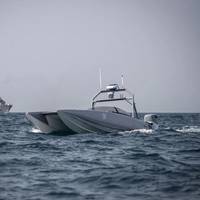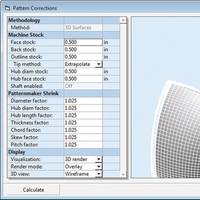Unmanned Maritime Systems Development Accelerates

There is little question that world militaries see the value of unmanned systems to complement their manned counterparts. The wars in Iraq and Afghanistan accelerated the development of unmanned aerial systems and unmanned ground systems to meet urgent operational needs. Now, there is increasing interest in unmanned surface systems, resulting in their placement on an accelerated development path.Like their air and ground counterparts, these unmanned surface systems are valued because of their ability to reduce the risk to human life in high threat areas…
Overcoming the Propeller Supply Bottleneck

Hydrocomp’s ProCad facilitates in-house Process Control of Propeller Design and Manufacture. Maritime Tactical Systems Inc. (MARTAC) is a Florida-based company building next-generation unmanned vessels for military applications. In preparation for the “Rim of the Pacific” (RIMPAC) military exercises in Pearl Harbor this last July, MARTAC needed a new propeller design for their MANTAS series high-speed vessels. Unfortunately, their current supplier was not meeting delivery schedules for the high-quality surface-piercing propellers that they need…
Feature:SEMCO Builds World's Largest Liftboat
Lift boats are the unglamorous vessels of oil and gas well servicing industry. They travel to the job site with three large cylindrical legs rising 150-250 ft. above the waterline. Once onsite, lift boats lower their legs to the seabed and raise their hull up to 100 ft. above the waterline to be even with the structure they are servicing to provide a stable platform for workers to transit from the lift boat to the project in which they are working. These versatile vessels can serve through the entire life of a oil or gas well from driving casing to provide a "path" for a jackup rig to drill through construction of the platform, repair and renovation of the platform to plug and abandonment of the well.
Crew Boats: GulfCraft Trifecta for Trico
It was inevitable. For several years now crew/supply boats have been following, almost in lock step their "big brothers," the supply boats, with technical and other innovations. Drop down bow thrusters, DP-1 systems, better crew accommodations and advanced radar systems are just a few of the features first introduced on supply boats and now available on crew/supply boats. The next step in this evolution is the introduction of automated monitoring, control and alarm systems on crew/supply boats. Trico Marine, Houma, La., is now operating three 155-ft. by 28-ft. crew/supply vessels that feature what is believed to be the first ever state-of-the-art automation system on this vessel type. Gulf Craft, Patterson, La., built the three identical vessels.
FEATURE: The Computer Invades the Pilothouse
Shipboard monitoring, sensing and control systems are in a transitional phase in 2002. Many of the newest vessels being launched today are using traditional monitoring systems with large alarm panels using banks of warning lights hard wired to 64 or more critical points on the vessel. These systems give warning if the system being monitoring falls or rises outside of the set point. "The problem is this method of monitoring doesn't give us the parameters the operator needs to diagnose the problem," said Jack Rowley, general manager of Engine Monitor, Inc., (EMI) St. Rose, La., a leading manufacturer of electronic ship monitoring equipment.
Feature: Real Repair
It is no secret that the overwhelming number of marine repair jobs at the nation's shipyards involves regulatory inspections. For example, the 150-ft. supply boat Mary R. Martin was in at Allied Shipyard, Larose, La. in mid-July for ABS and Coast Guard inspection and the change out of a few seals. The boat was dry docked for the inspections and minor repair work, her hull blasted and painted and after a few topside repairs in the slip and more paint work she was back at work. That type of "shave and a haircut" work is typical at Allied and other repair yards, but they are capable of much more complex work that literally extends the life of a vessel by many years. Earlier this year Allied finished a complete work over of the 195-ft. by 40-ft. supply boat Ms.






